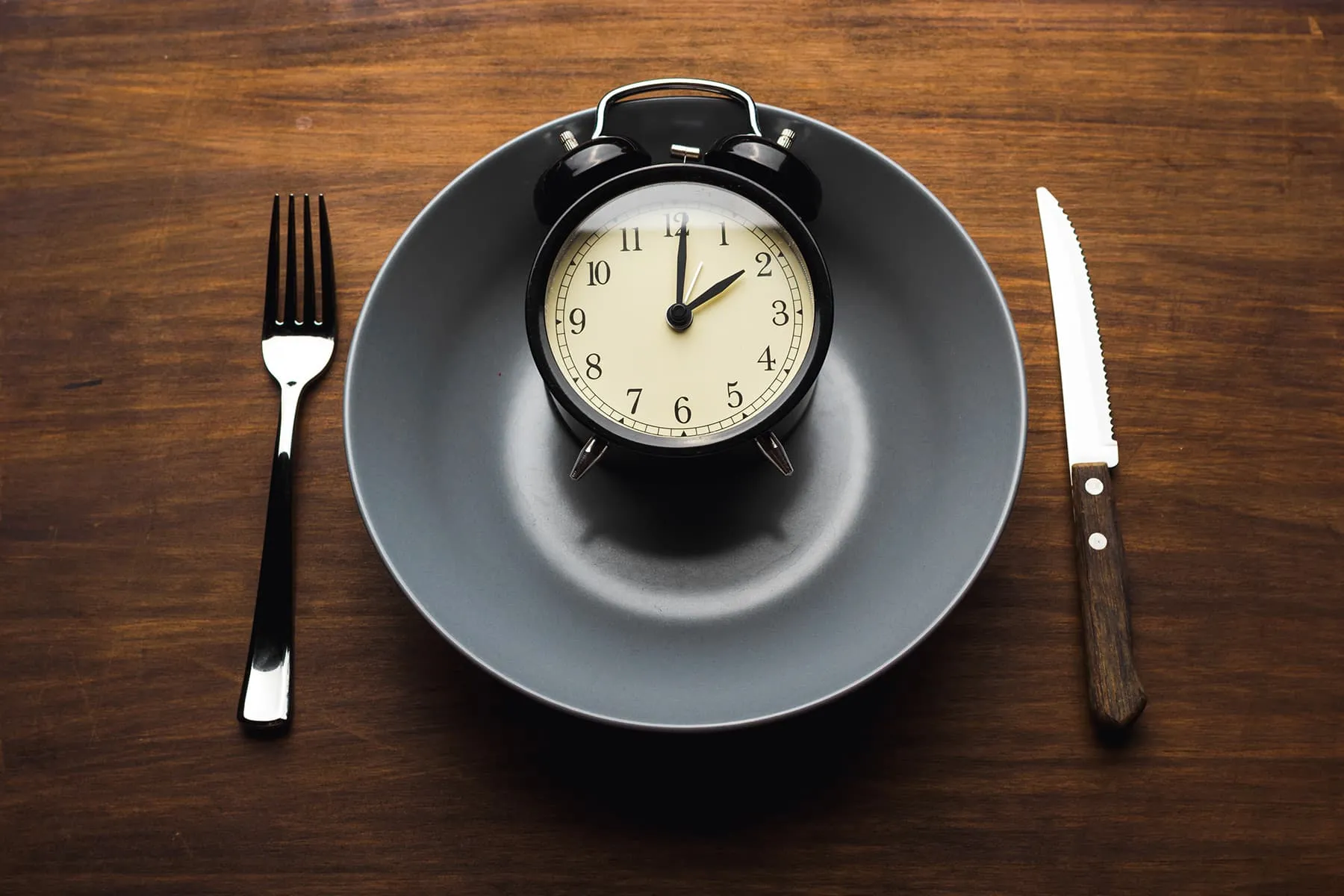Nov. 3, 2023 — Intermittent fasting has become a popular, and effective, way to lose weight. According to the International Food Information Council, the weight-loss method surpassed all others in the past year as the most popular way to achieve results. Around 10% of Americans between the ages of 18 and 80 have given the eating approach a go.
For the uninitiated, intermittent fasting is when you only eat during specific hours of the day, generally a much smaller window of time than normal. Rather than waking, eating breakfast, and then going about your day, you’d more likely delay your first meal until later in the morning. At the end of the day, you’d shut down food intake earlier than normal. The theory is that by closing the period of time in which you eat, you’ll consume fewer calories.
Because weight loss is often a goal and avenue to better health for many people with type 2 diabetes, researchers are looking at how intermittent fasting might help. The latest study, “Effect of Time-Restricted Eating on Weight Loss in Adults With Type 2 Diabetes,” published last week in the journal JAMA, found that the technique shows promise.
The randomized clinical trial compared the effects of an 8-hour, time restricted eating plan with a daily calorie restriction diet, and a control group in adults with type 2 diabetes and obesity. Researchers measured both weight loss and blood sugar markers.
Krista Varady, PhD, a professor of nutrition at the University of Illinois Chicago, was the lead author, and has studied intermittent fasting for two decades. “Prior to our research, there was very little that focused on this diet and type 2 diabetics,” she said. “Because type 2 diabetics now make up about 10% of the population and the number is rapidly increasing, we thought it was important to study intermittent fasting’s potential.”
The Plan in Action
For the new study, 75 people with diabetes took part and ate only between noon and 8 p.m. each day for 6 months. At the end of the trial, the time restricted eating group had lost nearly twice as much weight — on average 10 pounds — as the group counting calories, which averaged six pounds over the period.
Researchers had participants record the food they ate and found that those eating in the 8-hour window ate 300 to 500 fewer calories each day, Varady said. . Those only on a calorie-restricted diet only cut their number of calories by 200 per day.
When it came to the blood sugar marker A1C, both groups saw a drop of about one point, from around eight to seven. Diabetes remission begins below 6.5, so that improvement was also promising.
Daisy Duan, MD, associate program director and endocrinology fellow at Johns Hopkins University in Baltimore, said that many people with type 2 diabetes also fall into the category of obese, often at the “severe” level. “The mean BMI in this trial was 39, which is very high, so weight loss is part of the recommended treatment for this population,” she said. “Weight loss could help with their diabetes in general, and help them lower the amount of medication needed, too.”
The usual approach to this recommended weight loss is calorie reduction combined with physical activity. Duan found the results of the time-restricted eating plan intriguing. “Clinically, we say the best diet for diabetics is the one they will adhere to,” she said. “If this time restricted approach leads to better adherence, and it’s also safe, that’s encouraging.”
Varady said the authors made the safety of the approach a priority, because managing medications along with fasting can be tricky. “We were worried about low blood sugar with the approach, but the rates were no different than with the control group or calorie restricted group,” she said.
What made the time-restricted eating so effective? Varady says the participants said it was easy to follow. Most were able to follow the approach at least 6 days out of the week, and still achieve results. “We did surveys that showed they are all tired of counting calories,” she said. “Time-restricted eating was a refreshing alternative for them. They only had to watch the clock, and they found that much easier.”
This checks with what Duan sees with her patients. “If you think about the burden on the patient when they are counting calories, it’s a big investment of time and energy,” she said. “With time restricted eating, it’s much less complicated.”
While Duan sees many strengths to the research, she did point out that one of the medications many of the participants take — GLP-1 receptor agonists like Wegovy and Ozempic — sometimes leads to weight loss. “That could be a limiter of this study,” she said. “I’d like to know the effect of the drugs on the outcome.”
Regardless, Duan views the study as both reassuring in its safety and encouraging. “This is a great study in terms of looking at real type 2 patients to see if they could lose weight,” she said. “It’s good to know there’s a diet approach that patients preferred over others.”
Because the study was limited to 6 months, Varady would like to see if a longer period might bring blood sugar markers down even lower, potentially placing patients into remission. “We need more data and bigger studies if it were to lead to clinical guidelines,” she said. “But when this population loses weight, they can make significant progress and reduce medications. If this is the approach that allows them to do that, we’re encouraged by its potential.”
https://img.wbmdstatic.com/vim/live/webmd/consumer_assets/site_images/articles/health_tools/fasting_what_you_should_know_slideshow/1800ss_thinkstock_rf_clock_on_plate.jpg
2023-11-03 15:35:31





